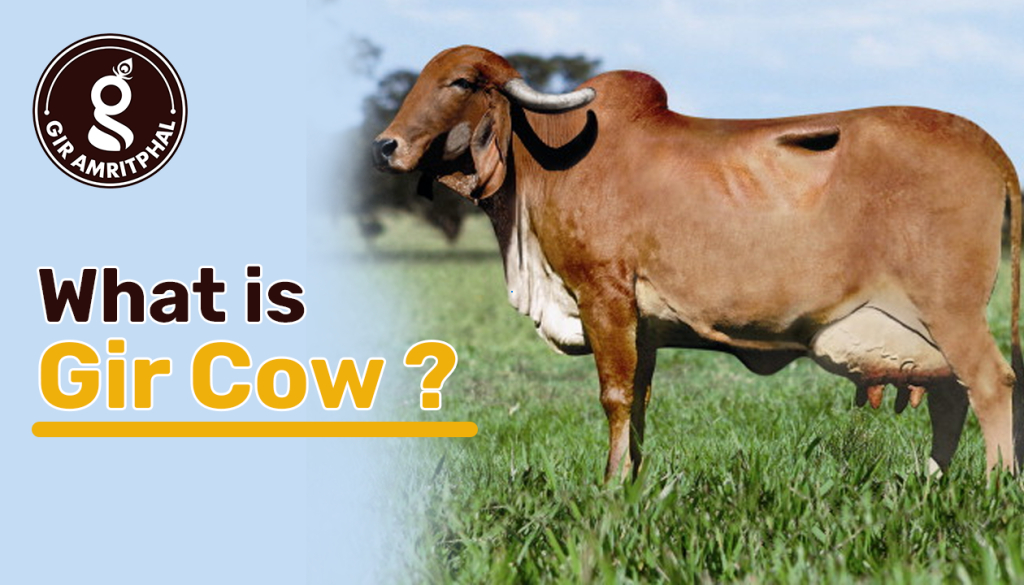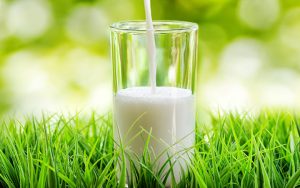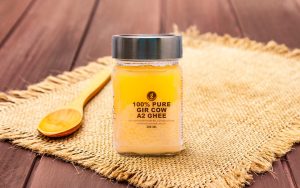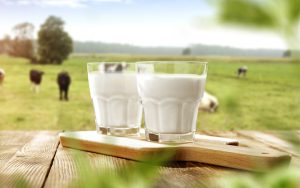The Gir cow is one of India’s most famous and esteemed cattle breeds, especially from the Gir forest area of Gujarat.
Recognized for its unique look, excellent milk production, and versatility, the Gir cow has become popular both in India and across the globe.
Origin and History of Gir Cow
The Gir cow, referred to as Desan, Bhavanagari, Gujarati, or Kathiawari, derives its name from the Gir forest, located in southwestern Gujarat. Local communities, including the Maldharis, have been breeding it for centuries.
Historically utilized for both milk and draft needs, Gir cattle have been essential to the rural economy of western India.
Physical Characteristics
Gir cows possess numerous unique characteristics that differentiate them from other breeds:
- Hue: Typically red, with white spots or specks. Some might possess entirely white or reddish fur.
- Hump: A noticeable hump above the shoulders, characteristic of zebu (Bos indicus) breeds.
- Horns: Arched and twisted upward and backward.
- Ears: Elongated, drooping ears that have a leaf-like appearance.
- Forehead: Curved and rounded, often referred to as a “protruding” forehead
Milk Production

Gir cows are famous for their substantial milk production among native Indian breeds. Typically, a Gir cow yields 10 to 15 liters of milk daily, although certain high-producing ones may provide even greater amounts.
The milk produced by Gir cows is high in A2 beta-casein protein, regarded as healthier and more easily digestible than A1 protein present in numerous Western breeds. A2 milk is thought to:
- Assist digestion
- Enhance immune function
- Decrease the likelihood of heart disease and diabetes.
Difference Between Gir cows & Normal cows
| Feature | Gir Cow | Jersey / HF Cow (Normal Cow) |
| Origin | India (Gujarat) | Western countries |
| Milk Type | A2 | Mostly A1 |
| Milk Yield | Moderate | High |
| Climate Fit | Hot, Indian | Cooler, temperate |
| Disease Resistance | High | Moderate to Low |
| Maintenance Cost | Low | High |
Adaptability and Hardiness
Gir cattle possess excellent heat tolerance, are resilient to diseases, and can flourish in severe climates, rendering them ideal for dry and semi-dry areas.
They are recognized for their long lifespan and serene nature.
Global Presence

Thanks to their excellent characteristics, Gir cows have been sent to nations such as Brazil, the United States, and Mexico, where they are utilized for crossbreeding to enhance local dairy populations.
In Brazil, for example, Gir cows have played a major role in creating high-yield dairy breeds such as Girolando (a hybrid of Gir and Holstein).
Cultural and Religious Significance
In India, cows, particularly the Gir breed, are regarded with great religious and cultural reverence. The Gir cow is frequently linked to purity, wealth, and sustainability.
Numerous spiritual and Ayurvedic practices highlight the therapeutic benefits of Gir cow milk, ghee, and even urine (gomutra).
Conservation and Promotion
In recent times, there has been an increasing effort to protect and enhance indigenous breeds such as the Gir cow because of their environmental benefits and cultural significance.
The Indian government, along with several NGOs, is promoting the use of native breeds among farmers to support sustainable agriculture and rural progress.
Conclusion
The Gir cow represents not only a dairy breed but also a symbol of India’s profound agricultural legacy. Due to its remarkable milk production ability, robustness, and health advantages, it serves as a significant resource in both conventional and contemporary dairy farming. With the rising interest in A2 milk and organic dairy farming, the Gir cow is expected to achieve even more international acclaim in the future.
FAQ’s
1. What is a Gir cow?
A Gir cow is a native breed of dairy cattle that comes from the Gir forest area in Gujarat, India. It is recognized for its substantial milk production and resilience to diseases.
2. What are the physical characteristics of a Gir cow?
Gir cows have a distinctive appearance with:
- A domed forehead
- Long, curved ears
- A hump on their back
- Reddish-brown to speckled white skin
3. What is the average milk yield of a Gir cow?
Gir cows generally produce between 6 to 12 liters of milk daily, although the best-quality cows can generate even higher amounts in ideal conditions.
4. Why is Gir cow milk considered special?
Gir cow milk contains A2 beta-casein protein, which is thought to be simpler to digest and more health-promoting than the A1 protein present in certain other breeds.
5. Are Gir cows suitable for commercial dairy farming?
Yes, due to their:
- Good milk yield
- Resistance to disease
- Adaptability to various climates
6. What is the temperament of Gir cows?
Gir cows are typically gentle, sociable, and simple to care for, making them a favored breed among both small and large-scale farmers.
7. How long is the lactation period for a Gir cow?
The lactation period typically lasts around 280 to 300 days.
8. What do Gir cows eat?
Gir cows flourish on a diet consisting of green forage, dry feed, grains, and mineral additives. Availability of clean water and a nutritious diet guarantees good health and milk yield.
9. Can Gir cows be crossbred?
Yes, Gir cows are frequently crossbred with other high-producing breeds such as Holstein Friesian or Jersey to merge productivity and durability.
10. Where are Gir cows mainly found?
Originally from Gujarat, they are now present throughout India and globally, including Brazil, where they are greatly esteemed.






